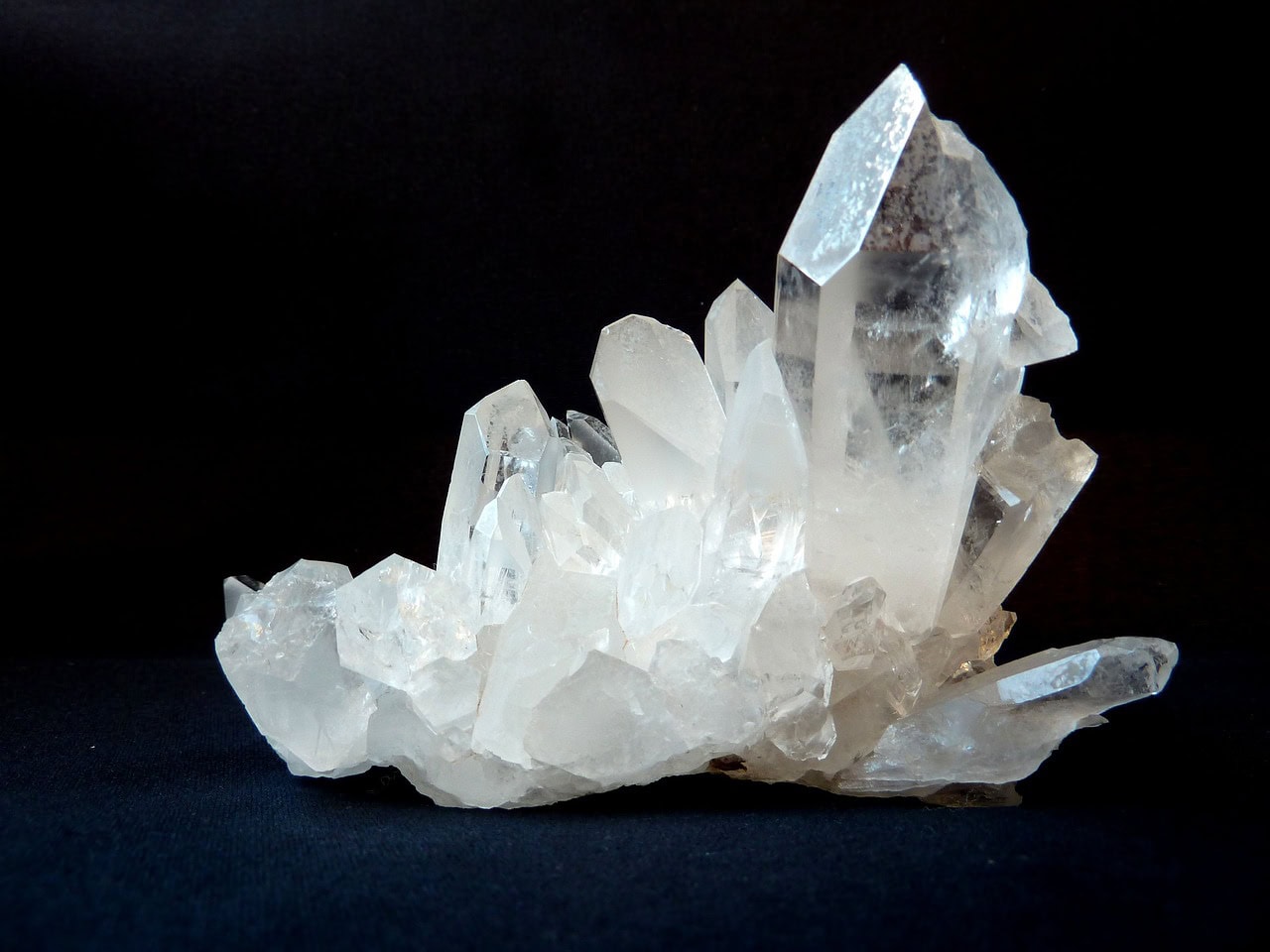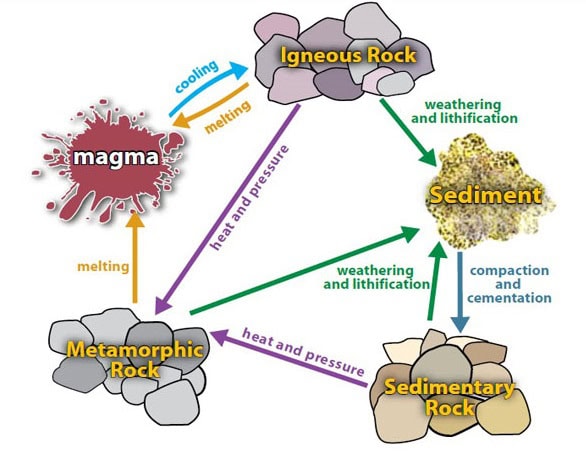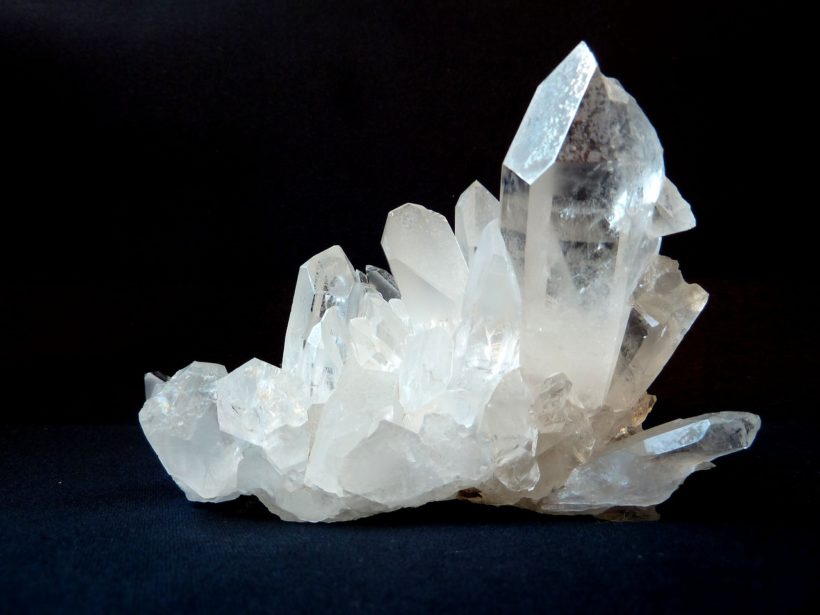The rocks beneath our feet and cookies on a baking sheet
There is a lot to learn about rocks and minerals, and some of it can be hard (no pun intended). Today, let’s put our baker’s hats on, as we compare rocks and minerals to one of my favorite things, cookies!
With the arrival of spring, the desire to enjoy the outdoors, to breathe fresh air and witness the emergence of plants and animals, is a tonic we all need. While out for a walk, turn your attention to the basic components of the ground below your feet — the rocks and minerals!
Cookies and rocks are similar in many ways. You can touch them, you can pick them up, you can throw them, you can make them crumble, and they are both made up of different parts. The parts, or ingredients, that are put together to make a cookie include things like flour, baking soda, eggs, vanilla, salt, sugar, and butter. The ingredients of a rock are called minerals, which are chemical elements in a solid form, and can include quartz, feldspar, calcite, garnet, aluminum, gold, and more.
 You may be wondering, “But what about the graphite in my pencil, or the ruby in a ring, are those rocks?” Great question! The answer is no, they are minerals. Minerals are the building blocks of rocks. Just as you can have ingredients like sugar and eggs without having cookies, you can have minerals without having rocks. However! You can’t make cookies without ingredients, and you can’t have rocks without minerals. This may remind you of the old saying we learned in math growing up: All squares are rectangles, but not all rectangles are squares.
You may be wondering, “But what about the graphite in my pencil, or the ruby in a ring, are those rocks?” Great question! The answer is no, they are minerals. Minerals are the building blocks of rocks. Just as you can have ingredients like sugar and eggs without having cookies, you can have minerals without having rocks. However! You can’t make cookies without ingredients, and you can’t have rocks without minerals. This may remind you of the old saying we learned in math growing up: All squares are rectangles, but not all rectangles are squares.
Of course, the ingredients, and how much of each you use, will affect what your cookies look and taste like. The same can be said for the types and amounts of each mineral in a rock, affecting what is looks like and how it can be used (and presumably what they taste like as well, but please don’t try that at home). For example, granite is a stone made of a mixture of mica, quartz, and feldspar. It has a varied appearance and can be used for countertops, building stone, or even monuments. Sandstone is a rock also made of quartz and feldspar. It tends to have a more regular appearance, and while it can also be used as building stone, its softer makeup allows it to also be used for cement, glass, and ceramics as well.
 The similarities to cookies don’t end at the ingredients but extend to how the three types of rocks are made. Igneous rocks are like no-bake cookies as they aren’t heated over time but are formed by cooling of already hot materials. Igneous rocks form from the cooling of lava or magma, and depending on the rate of cooling, can either produce rocks that have very visible crystals like granite or appear glassy like obsidian.
The similarities to cookies don’t end at the ingredients but extend to how the three types of rocks are made. Igneous rocks are like no-bake cookies as they aren’t heated over time but are formed by cooling of already hot materials. Igneous rocks form from the cooling of lava or magma, and depending on the rate of cooling, can either produce rocks that have very visible crystals like granite or appear glassy like obsidian.
Metamorphic rocks are similar to an oven-baked cookie, except that their oven is under the surface of the earth, where they are formed under extreme heat and pressure. Gneiss and schist are two common metamorphic rocks found in the area.
The third type of rocks are sedimentary, formed by deposits of rocks and minerals, called sediment, collecting over time and loosely compacting together, like gathering all the crumbs from your cookie together on a napkin and squishing them back together. Since these rocks are formed from the “crumbs,” they are made up of all three types of rocks. Common examples are shale and limestone.
The processes of rocks forming and breaking down over time make up the rock cycle.

Rocks and minerals are an important cornerstone of our lives (pun intended that time). You likely drove over a road made of paved rocks to buy the device on which you are reading this very blog, and that device uses different types of minerals including quartz and gold to operate. Hopefully this post has not only given you a craving for cookies, but an even greater appreciation for the natural world.
If you take a walk at Teatown look around and see how many of the rocks mentioned above you can find.
If you would like to learn more about rocks and minerals, especially in our area, consider checking out the Mid-Hudson Valley Gem and Mineral society: http://mhvgms.org/
If you have a young person in your life who is interested in learning more about rocks and minerals, take them for hikes to different areas and collect interesting rocks and minerals along the way. A basic ID guide could help you determine what rocks and minerals you are seeing and learn about their characteristics and usages. Or for the littler ones you could use it as an opportunity to learn describing words, by doing a scavenger hunt like this one here: Rock and Mineral Scavenger Hunt
And if you’re stuck inside and looking for a way to learn more about different categories of rock, and a little about the rock cycle, check out this fun and tasty craft: https://leftbraincraftbrain.com/how-to-make-a-delicious-rock-cycle-with-chocolate-rocks/

About the Author
Jesse Predmore
Jesse is Teatown’s newest Environmental Educator, and comes to us with experience from Bear Mountain Trailside Museum, Abilene Zoo, and he holds a degree in Environmental Biology from Lockhaven University.



Leave a Reply